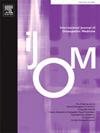回顾性分析三、四年级医学生使用的整骨手法治疗技术
IF 1.5
4区 医学
Q2 MEDICINE, GENERAL & INTERNAL
引用次数: 0
摘要
目的确定临床前骨科医学院1、2年级教授整骨手法的频率与3、4年级学生使用整骨手法的频率之间是否存在相关性。次要目的是确定学生在使用整骨手法治疗(OMT)时报告的舒适度和对易用性和安全性的感知。方法回顾性分析2020-2022年第三和第四年OMT患者遭遇日志,以了解学生选择的技术。将这些技术与临床前课程中教授该技术的频率进行比较。调查数据收集自2025名完成家庭医学轮转的三年级学生,评估影响学生在三年级和四年级轮转时使用某些OMT技术的因素。最终分析包括20,149份OMT日志和96份学生调查。日志显示,肌肉能量(ME)是班级中使用最多的技术。肌肉能量也是临床前课程中最常教授的内容。数据显示,易用性和信心与学生在临床轮转期间使用整骨疗法技术显著相关。不同类别间一致性相关性较强(0.72-0.98),两两相关均有统计学意义。结论在第三和第四年的临床轮转中,骨科技术的使用与他们的信心和实施技术的容易程度直接相关。课程频率与学生信心之间存在相关性,表明临床前课程和动手实验时间的重要性。本文章由计算机程序翻译,如有差异,请以英文原文为准。
A retrospective analysis of osteopathic manipulative treatment techniques used by 3rd and 4th year medical students
Objective
To determine whether there is a correlation between the frequency with which osteopathic manipulative techniques are taught in preclinical osteopathic medical school years one and two and the prevalence of student use during years three and four. The secondary objective was to determine the students’ reported comfort and perception of ease and safety when using osteopathic manipulative treatment (OMT).
Methods
Third- and fourth-year OMT patient encounter logs for the classes of 2020–2022 were retrospectively reviewed for the students' technique of choice. These techniques were compared to how frequently that technique was taught in the preclinical curriculum. Survey data was collected from the class of 2025 third-year students upon completion of their family medicine rotation evaluating factors that influence students’ use of certain OMT techniques while on third- and fourth-year rotations.
Results
Final analysis included 20,149 OMT logs and ninety-six student surveys. The logs indicated that Muscle Energy (ME) was the most used technique among the classes. Muscle energy is also the most frequently taught in the preclinical curriculum. The data show ease of use and confidence were significantly correlated to students’ use of osteopathic techniques during clinical rotations. There was a strong correlation of consistency (0.72-0.98) among the different classes and all pairwise correlations were statistically significant.
Conclusion
The use of osteopathic techniques during third and fourth-year clinical rotations is directly related to their confidence and ease of performing the technique. Correlations exist between curricular frequency and students’ confidence, indicating the importance of preclinical curriculum and hands-on lab time.
求助全文
通过发布文献求助,成功后即可免费获取论文全文。
去求助
来源期刊
CiteScore
2.20
自引率
36.80%
发文量
42
审稿时长
3 months
期刊介绍:
The International Journal of Osteopathic Medicine is a peer-reviewed journal that provides for the publication of high quality research articles and review papers that are as broad as the many disciplines that influence and underpin the principles and practice of osteopathic medicine. Particular emphasis is given to basic science research, clinical epidemiology and health social science in relation to osteopathy and neuromusculoskeletal medicine.
The Editorial Board encourages submission of articles based on both quantitative and qualitative research designs. The Editorial Board also aims to provide a forum for discourse and debate on any aspect of osteopathy and neuromusculoskeletal medicine with the aim of critically evaluating existing practices in regard to the diagnosis, treatment and management of patients with neuromusculoskeletal disorders and somatic dysfunction. All manuscripts submitted to the IJOM are subject to a blinded review process. The categories currently available for publication include reports of original research, review papers, commentaries and articles related to clinical practice, including case reports. Further details can be found in the IJOM Instructions for Authors. Manuscripts are accepted for publication with the understanding that no substantial part has been, or will be published elsewhere.

 求助内容:
求助内容: 应助结果提醒方式:
应助结果提醒方式:


